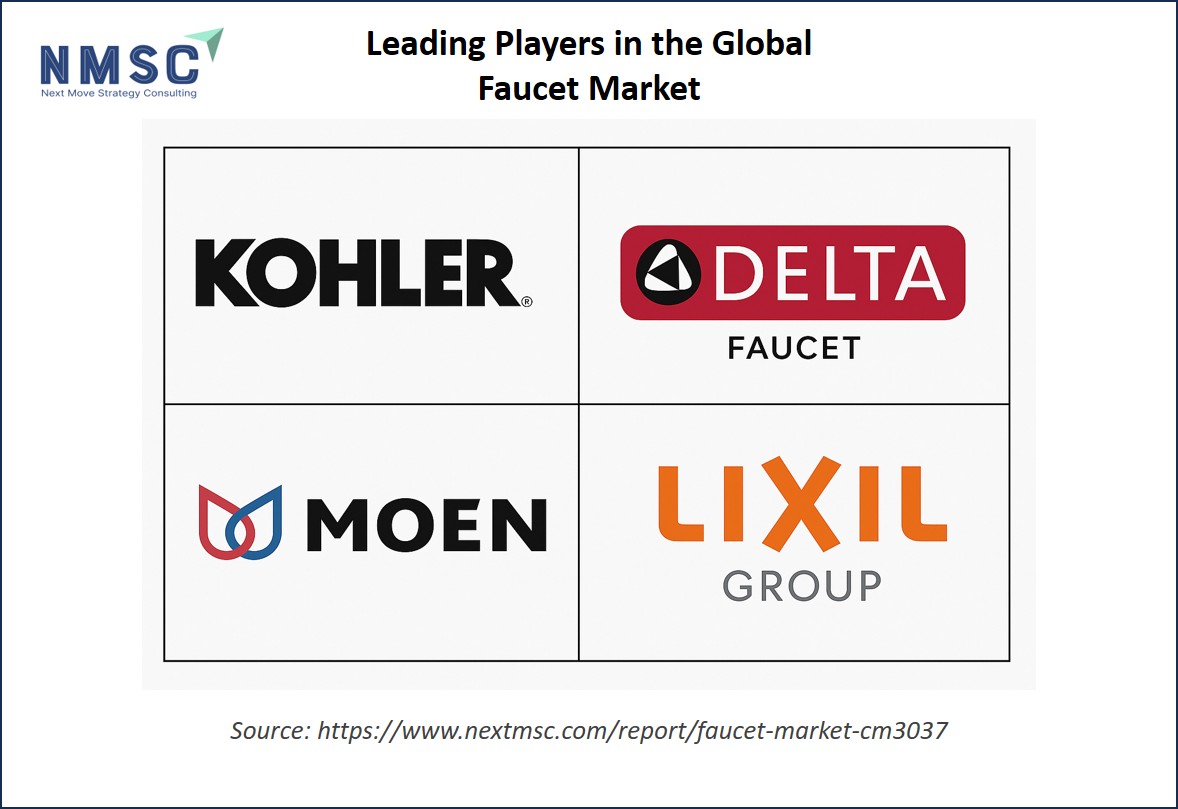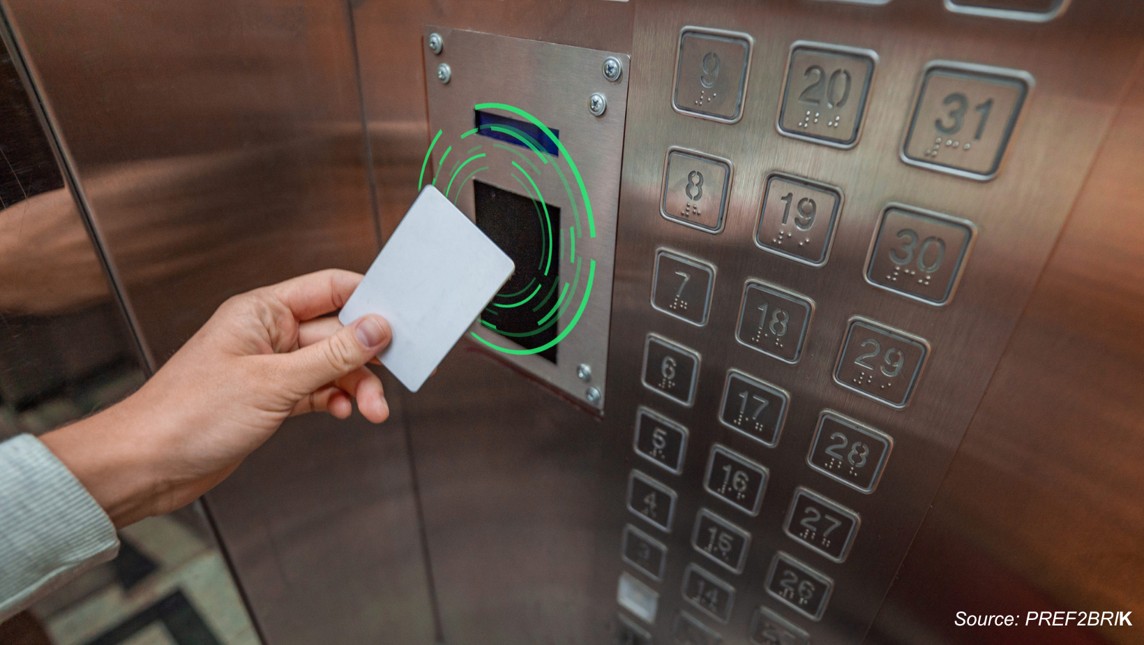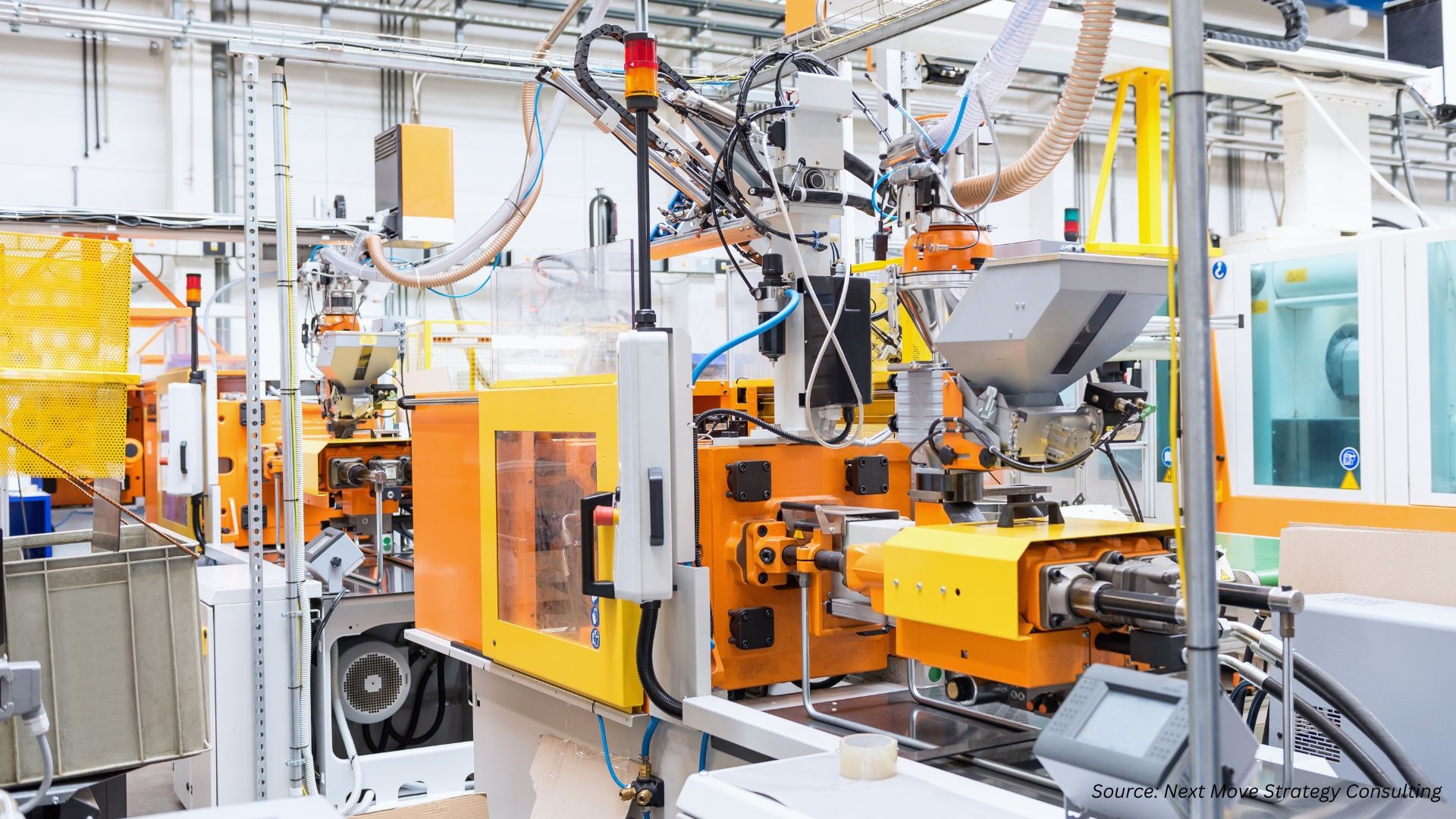What Drives the Faucet Market? Leading Manufacturers and Their Strategies in 2024-2025
Published: 2025-09-10

The global Faucet Market is booming, valued at USD 35.72 billion in 2024 and predicted to reach USD 54.68 billion by 2030 with a CAGR of 7.4%. But what are the top players doing to stay ahead in this competitive landscape? This blog dives into the strategies of leading faucet manufacturers, focusing on their 2024-2025 initiatives.
Let’s explore how innovation, sustainability, and market expansion are shaping their success.
Why Is the Faucet Market Growing Rapidly?
The faucet market is driven by urbanization, heightening technological innovations, and a surge in the construction sector. Consumers are increasingly demanding smart, water-efficient, and aesthetically pleasing faucets. In an age where technology seamlessly blends with daily life, smart faucets have emerged as a leading innovation in home fixtures. Jaquar’s smart faucets offer several benefits, including enhanced convenience, improved hygiene, and water and energy savings. The touchless operation reduces physical contact, minimizing the spread of germs. Temperature control ensures a consistent and safe water temperature, while water-efficient features help conserve resources and reduce utility bills. Additionally, smart faucets often come with modern designs that can enhance the aesthetic appeal of your kitchen or bathroom.
Key Growth Drivers:
-
Urbanization: Rapid construction in emerging economies like India and China.
-
Smart Home Trends: Demand for smart faucets - Sensor Faucets are a great example, allowing users to turn the water on and off with just a wave of the hand. This hands-free operation is especially beneficial in kitchens and bathrooms, reducing the need to touch handles and knobs. Kohler’s Sensate® faucet only releases water when needed, helping to conserve water while keeping your hands free for other tasks. This intuitive technology enhances daily routines and makes life more efficient, providing an effortless and seamless experience every time. Such sensor faucets not only enhance convenience but also add a touch of luxury to your bathroom or kitchen.
-
Sustainability: Water-saving technologies align with environmental goals. Faucets are the highest household water users after showers, making conservation critical. Sustainability is an increasing priority for homeowners looking to minimize environmental footprints. Jaquar’s faucet aerators optimize water flow, limiting usage while retaining effectiveness, hence, help water conservation.
-
Renovation Boom: Home improvement spending is expected to rise. HIRI projects that the total spend for home improvement products by consumers will pick back up in 2026 and reach approximately $449 billion by 2028. For professional contractors and remodelers, the forecast shows an even more substantial uptick in revenue from 2025 onwards, with an estimate of $228 billion by 2028.
The faucet market’s growth is fueled by consumer demand for innovative, sustainable, and stylish products, with Asia Pacific leading due to rapid urbanization.
Who Are the Leading Faucet Manufacturers in 2024?
The faucet market is highly competitive, with key players leveraging innovation and strategic expansions. The top manufacturers include Kohler Co., Moen Incorporated, Delta Faucet Company, and LIXIL Group Corporation, among others.
What Strategies is Kohler Co. Employing?
Kohler Co., a privately held leader, focuses on innovation, sustainability, and premium design. In 2024, Kohler introduced smart faucets with voice-activated controls, aligning with the growing smart home trend. Water conservation is a growing concern, and selecting the right products to reduce water consumption is an important step towards sustainability. As a leader in bathroom and kitchen fixtures, Kohler recognizes that faucets are a significant source of water usage in everyday life. By incorporating advanced technologies like aerators and smart valve systems into their designs, Kohler ensures that its products help customers reduce water consumption without sacrificing the quality or effectiveness of the water flow. With a focus on sustainability, Kohler continues to create products that contribute to a more efficient and eco-friendlier lifestyle.
Key Strategies:
-
Product Innovation: Launched the Anthem™ Digital Control, an innovative device allows personalization by controlling outlets, temperature, and water flow. Paired with the KOHLER Konnect® app for additional functionality and customization, it can be integrated with voice assistants for hands-free control.
-
Sustainability: Expanded water-saving technologies like WaterSense labeled bathroom sink faucets and faucet accessories are high–performing, water–efficient fixtures that help reduce water use in homes and save money on water bills. It uses a maximum of 1.5 gallons per minute and can reduce a sink's water flow by 30 percent.
Kohler’s focus on smart technology and sustainability positions it as a forward-thinking leader.
How Is Moen Incorporated Staying Competitive?
Moen, now part of the Fortune Brands Innovations company, emphasizes touchless technology and consumer-centric design.
Key Strategies:
-
Smart Technology: Moen has led the smart water revolution. It leverages machine learning to safeguard homes with the flo smart water monitor and shutoff. The device is attached to a home’s main water supply line and operates 24/7 in the background, continually monitoring for potential water abnormalities. Featuring enhanced FloSense™ 3.0 Technology and MicroLeak™ Technology, the device learns the unique water usage patterns of the home and can sense leaks as small as one drop per minute along with other potential issues with unmatched precision. If it detects an abnormality in usage or the beginnings of a catastrophic leak, it can intervene proactively, automatically shutting off the water supply so the home suffers no damage. It can also detect issues like running toilets and small drips.
-
Sustainability: WaterSense, a partnership program sponsored by the EPA, helps protect the United States' future water supply by promoting water efficiency. Moen is proud to be selected as a WaterSense Manufacturer Partner. Moen reuses 70% of the water used for product testing, along with adapting other corporate sustainable initiatives. It further creates a strong consumer presence and promotes WaterSense on packaging, in catalogs and online.
Moen’s investment in smart technology and strong distribution networks drives its competitive edge.
What Makes Delta Faucet Company a Market Leader?
Delta Faucet Company, part of Masco Corporation, focuses on innovation and durability. In 2024, Delta’s Touch2O technology, enabling touch and touchless operation, captured a significant share of the kitchen faucet segment. This technology gained popularity due to its convenience and ability to keep faucets clean, especially in busy kitchens.
Key Strategies:
-
Technological Innovation: Expanded Touch2O and H2Okinetic technologies for precise water flow and efficiency.
-
Brand Diversification: Leveraged premium brand Brizo for luxury market.
-
Sustainability: Delta Faucet is committed to green manufacturing processes and to helping people use water in smarter and more environmentally responsible ways. The company’s products deliver water to homes across the world every day, and through innovative technologies like Touch2O® faucets and H2Okinetic® shower heads, help homes save water every time tapped on a faucet.
Delta’s blend of innovative technology, green manufacturing, and premium branding ensures its strong market position.
Why Is LIXIL Group Corporation Gaining Traction?
LIXIL, a Japanese conglomerate, is a global leader with brands like American Standard and Grohe, with annual sales of about US$5.0 billion. It is establishing a powerful presence across global markets with sales channels throughout North America, Asia, Europe, and Africa, meeting local needs with a product portfolio that spans all market segments, from the luxury to the value-for-money ends of the spectrum.
Key Strategies:
-
Regional Expansion: LIXIL collaborates with local manufacturers and non-governmental organizations (NGOs) to bolster regional production and distribution capacities, amplifying the reach and impact of SATO products. To date, over 24,000 individuals, including women and young people from India, Uganda, Nigeria, Tanzania, and other countries, have participated in their complimentary training programs, developed in partnership with NGOs and international organizations. SATO's product range is within Asia and Africa. As of March 31, 2024, it has shipped approximately 9.4 million units across 46 countries, improving sanitation and hygiene for an estimated 82 million people.
-
Smart Faucets: Introduced Grohe’s Sense Guard, a smart water controller, to reduce water wastage. It monitors changes in temperature and humidity to help prevent frost damage and even connects to user’s home WiFi network. In the case of a connectivity loss, GROHE Sense Guard continues to protect homes by shutting off water in the event a pipe burst occurs.
-
Sustainability: Committed to reducing CO2 emissions and is not limited to business processes, products, and services, but also extends across society. The company provide solutions for users to take measures against natural disasters or to prevent heat stroke, helping them adapt to climate change. LIXIL’s Environmental Vision 2050 “Zero Carbon and Circular Living” has designated Climate Change as one of the focus areas.
LIXIL’s regional focus and sustainable innovations drive its rapid growth in the faucet market.
How Are Manufacturers Addressing Consumer Trends?
Consumer-Centric Strategies:
-
Smart Features: Voice activation, touchless sensors, and AI-driven water monitoring (e.g., Flo by Moen, Grohe Sense).
-
Aesthetic Appeal: Among the growing trends, matte black bathroom faucets have become a popular choice for homeowners and designers alike. Black chrome has a shiny, reflective finish that is similar to traditional chrome. But it has a darker, more subtle look. It has a polished surface and can show fingerprints and water spots more easily. Black matte, on the other hand, has a non-reflective, smooth surface with a modern, understated appearance. It tends to hide fingerprints, water spots, and minor scratches more effectively, offering a more durable and low-maintenance finish.
-
Water Efficiency: WaterSense certifications and low-flow aerators meet regulatory and consumer demands for sustainability. Replacing old, inefficient bathroom faucets and aerators with WaterSense labeled models can save the average family nearly 11,000 gallons of water over the faucets' lifetime.
Manufacturers are prioritizing smart technology, aesthetics, and sustainability to meet evolving consumer preferences.
What Challenges Do Manufacturers Face?
Despite growth, manufacturers face challenges like rising raw material costs and regulatory pressures. Brass is an alloy of copper and zinc that plays a crucial role across many industries, from construction to manufacturing. However, brass prices are not fixed; they can change frequently based on various market factors. Knowing why these fluctuations occur is essential for investors, manufacturers, and consumers. Predicting brass prices is complex, influenced by several shifting factors. However, emerging technologies focused on sustainability and recycling are expected to shape market dynamics.
Key Challenges:
-
Cost Pressures: Fluctuating prices of brass poses a challenge. Increased demand from industries such as construction, electrical, and manufacturing is straining available supplies. Supply chain disruptions, caused by geopolitical events and logistical challenges, further limit production and raise transportation costs.
-
Regulatory Compliance: Stricter water efficiency standards poses challenge to the market. In the U.S., conventional kitchen and bathroom faucets must use no more than 2.2 gallons per minute (gpm). Faucets that meet WaterSense’s energy efficiency standards must use no more than 1.5 gpm, a 32% decrease in flow rate over the federal requirement.
-
Competition: The faucet market is characterized by intense competition among numerous brands vying for market share. Key players and their focus areas include Kohler known for luxury, durability, and advanced features; Moen for its innovative and affordable faucets with user-friendly technology; Hansgrohe for high-quality and innovative products; and so on.
Manufacturers must navigate cost and regulatory challenges while maintaining innovation and competitiveness.
Next Steps: Actionable Takeaways for Stakeholders
To capitalize on the faucet market’s growth, stakeholders can adopt these strategies:
-
Invest in Smart Technology: Prioritize R&D for touchless and AI-driven faucets to align with consumer demand.
-
Focus on Sustainability: Integrate water-saving features to meet regulatory standards and consumer expectations.
-
Expand in Asia Pacific: Target high-growth markets like China and India for new opportunities.
-
Monitor Material Costs: Develop cost-effective sourcing strategies to mitigate supply chain risks.
Conclusion:
The faucet industry is poised for significant growth through 2025, driven by innovation and sustainability. Leading manufacturers like Kohler, Moen, Delta, and LIXIL are leveraging smart technology, eco-friendly designs, and strategic expansions to maintain their edge. By aligning with consumer trends and addressing challenges, these companies are shaping the future of the industry.
About the Author
 Sneha Chakraborty is a seasoned SEO Executive and Content Writer with over 4 years of experience in the digital marketing space, bringing a strong command of online visibility strategies and a keen insight into the evolving digital landscape. She specializes in enhancing online visibility and user engagement through data-driven strategies and creative content solutions. Sneha is passionate about translating complex digital concepts into accessible content for a wide audience. Outside of work, she enjoys reading, sketching, and exploring the outdoors through nature photography.
Sneha Chakraborty is a seasoned SEO Executive and Content Writer with over 4 years of experience in the digital marketing space, bringing a strong command of online visibility strategies and a keen insight into the evolving digital landscape. She specializes in enhancing online visibility and user engagement through data-driven strategies and creative content solutions. Sneha is passionate about translating complex digital concepts into accessible content for a wide audience. Outside of work, she enjoys reading, sketching, and exploring the outdoors through nature photography.
About the Reviewer
 Debashree Dey is a skilled Content Writer, PR Specialist, and Assistant Manager with strong expertise in Digital Marketing. She specializes in crafting visibility strategies and delivering impactful, data-driven campaigns. Passionate about creating engaging, audience-focused content, she helps brands strengthen their online presence. Beyond work, she draws inspiration from creative projects and design pursuits.
Debashree Dey is a skilled Content Writer, PR Specialist, and Assistant Manager with strong expertise in Digital Marketing. She specializes in crafting visibility strategies and delivering impactful, data-driven campaigns. Passionate about creating engaging, audience-focused content, she helps brands strengthen their online presence. Beyond work, she draws inspiration from creative projects and design pursuits.
















Add Comment